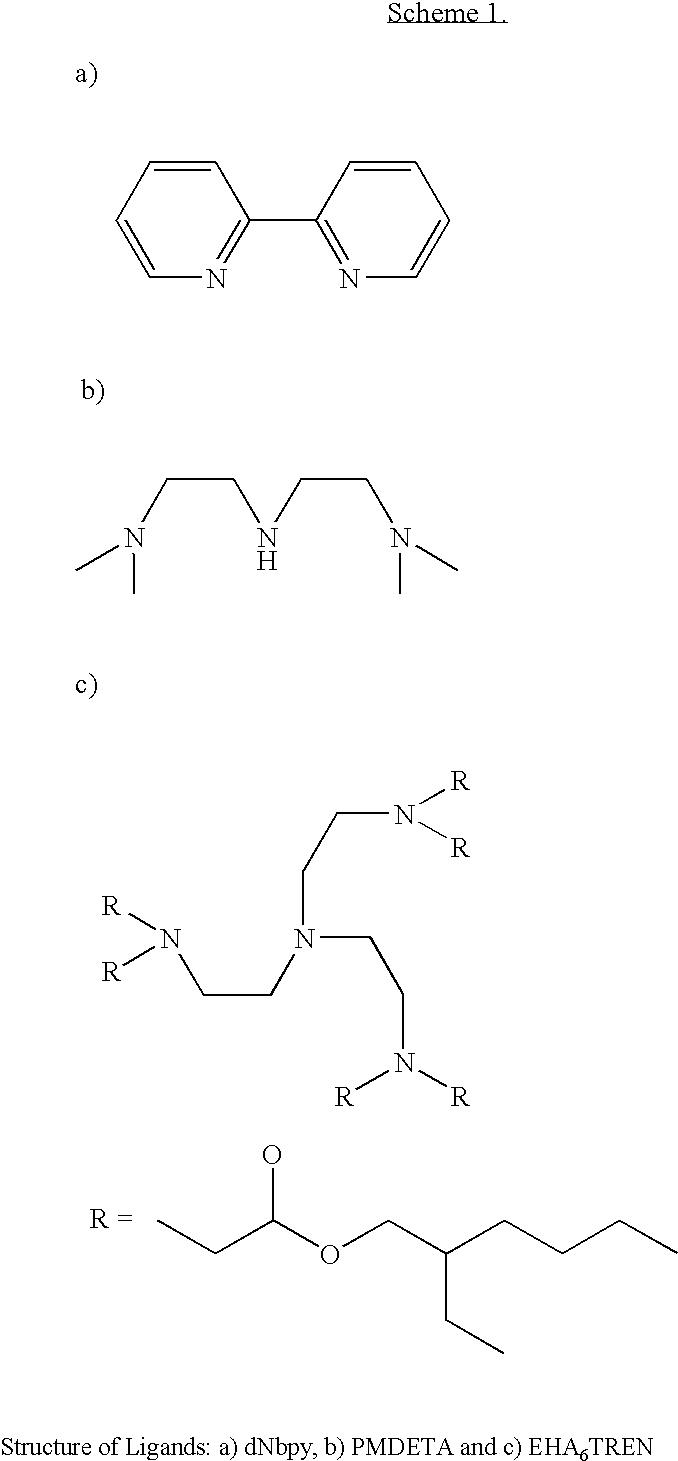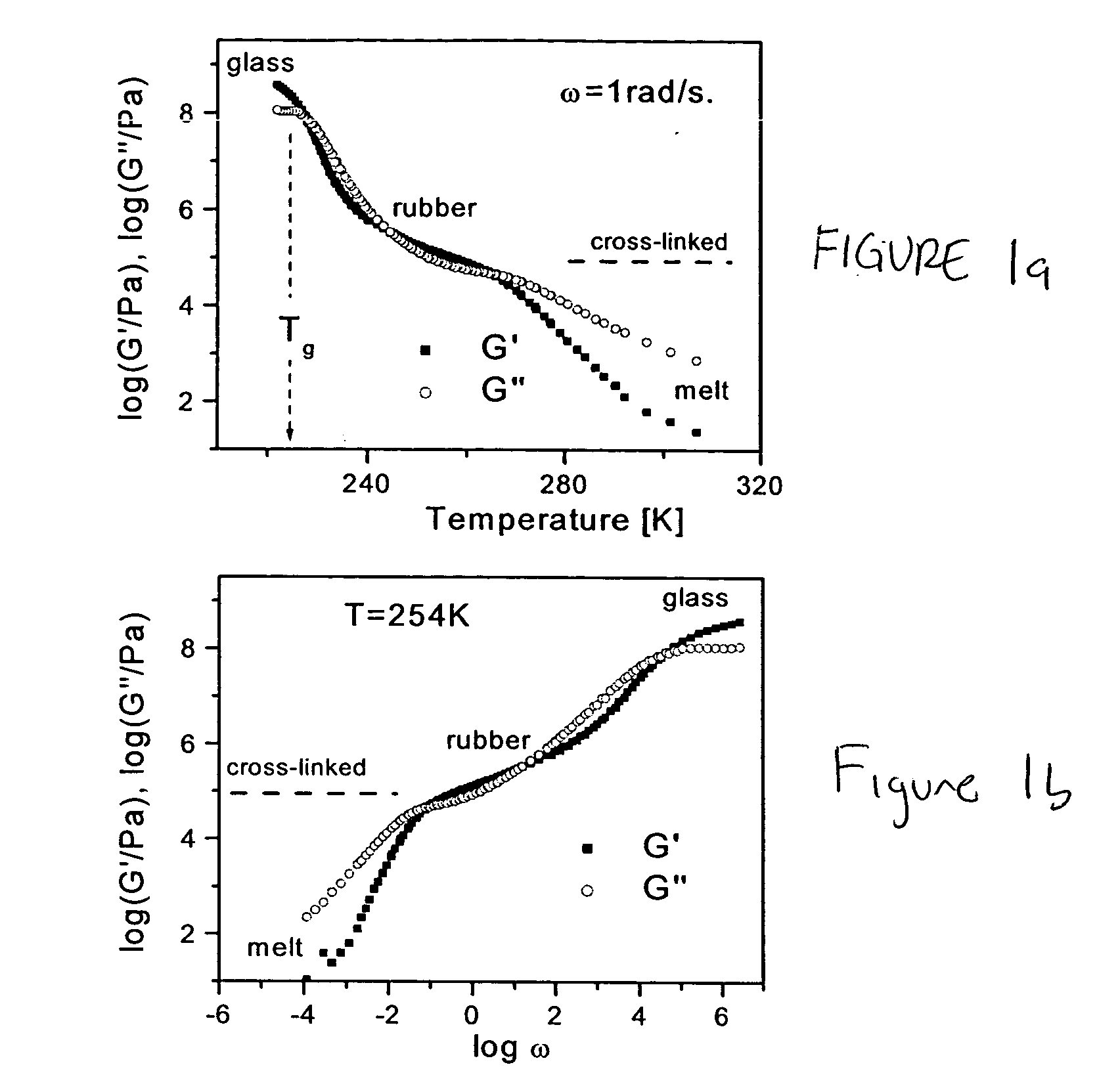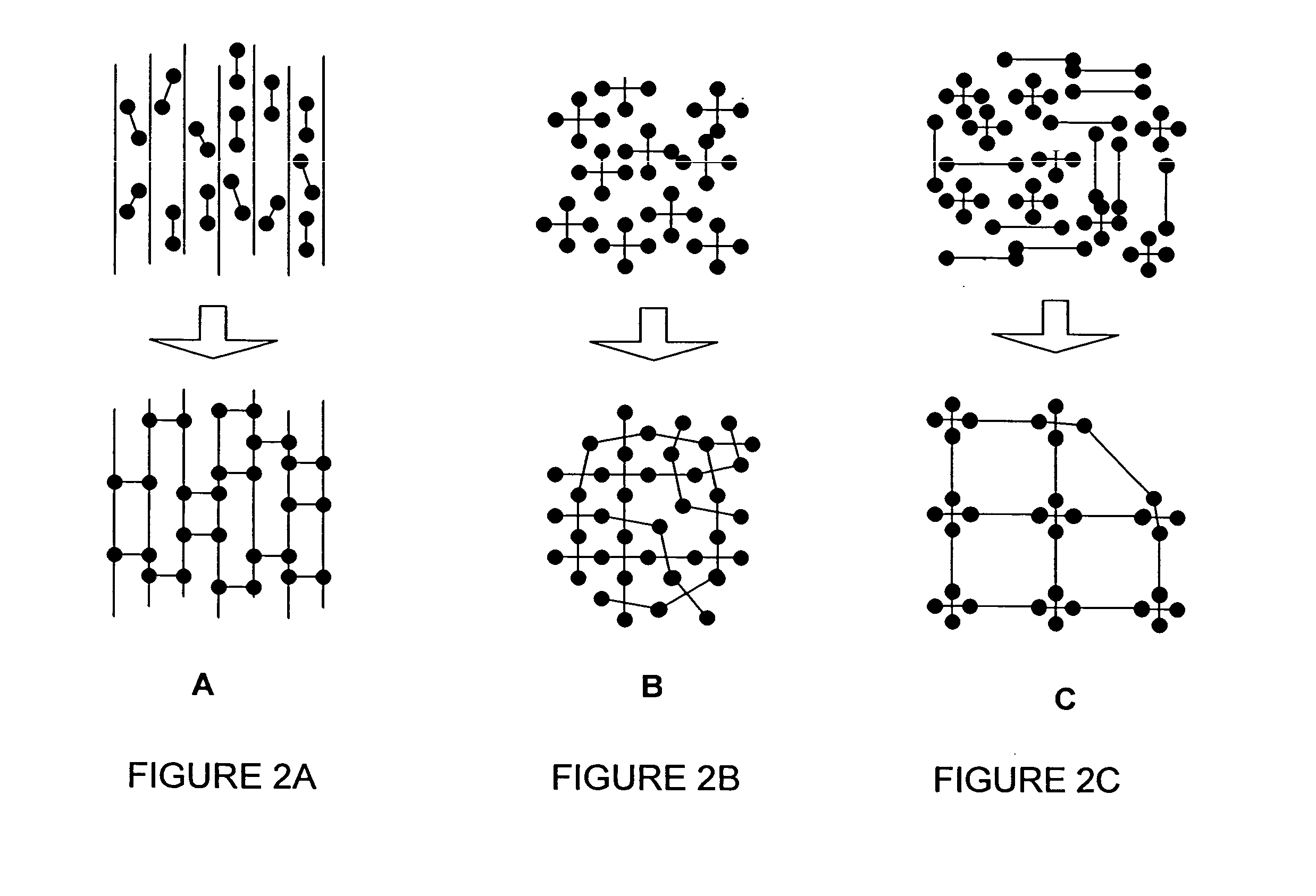Polymers, supersoft elastomers and methods for preparing the same
a supersoft elastomer and polymer technology, applied in the direction of coatings, emulsion paints, etc., can solve the problems of solvent swollen polymer gels not being stable, the plateau modulus may be significantly lowered, and it is not easy to reduce the shear elastic modulus below the bulk plateau modulus of a given polymer
- Summary
- Abstract
- Description
- Claims
- Application Information
AI Technical Summary
Problems solved by technology
Method used
Image
Examples
examples
[0068] Materials. Poly(ethylene glycol) methyl ether methacrylate, H.sub.2C.dbd.C(CH.sub.3)COO--(CH.sub.2CH.sub.2O).sub.nCH.sub.3, (PEOMA, MW.sub.av=300 g / mol, DP.sub.PEO=5; MW.sub.av=1100 g / mol, DP.sub.PEO=23) were obtained from Aldrich. Antioxidants MEHQ and BHT were removed from monomers by passing through an alumina column. PEOMA with higher MW, which is solid at room temperature (rt), was dissolved in tetrahydrofuran (THF); after removing of the inhibitor, the solvent was evaporated and the macromonomer was dried under vacuum to a constant weight. Copper(l) bromide (CuBr, Aldrich, 98%) and copper(I) chloride (CuCl, Acros, 95%) were purified by stirring with glacial acetic acid, (Fisher Scientific), followed by filtration and washing the solid three times with ethanol, and twice with diethyl ether. The solid was dried under vacuum (1.times.10.sup.31 2 mbar) for 2 days. Copper(II) bromide (CuBr.sub.2, Acros, 99+%) and copper(II) chloride (CuCl.sub.2, Aldrich, 99.99%) were used as...
PUM
| Property | Measurement | Unit |
|---|---|---|
| glass transition temperature | aaaaa | aaaaa |
| glass transition temperature | aaaaa | aaaaa |
| elongation | aaaaa | aaaaa |
Abstract
Description
Claims
Application Information
 Login to View More
Login to View More - R&D
- Intellectual Property
- Life Sciences
- Materials
- Tech Scout
- Unparalleled Data Quality
- Higher Quality Content
- 60% Fewer Hallucinations
Browse by: Latest US Patents, China's latest patents, Technical Efficacy Thesaurus, Application Domain, Technology Topic, Popular Technical Reports.
© 2025 PatSnap. All rights reserved.Legal|Privacy policy|Modern Slavery Act Transparency Statement|Sitemap|About US| Contact US: help@patsnap.com



